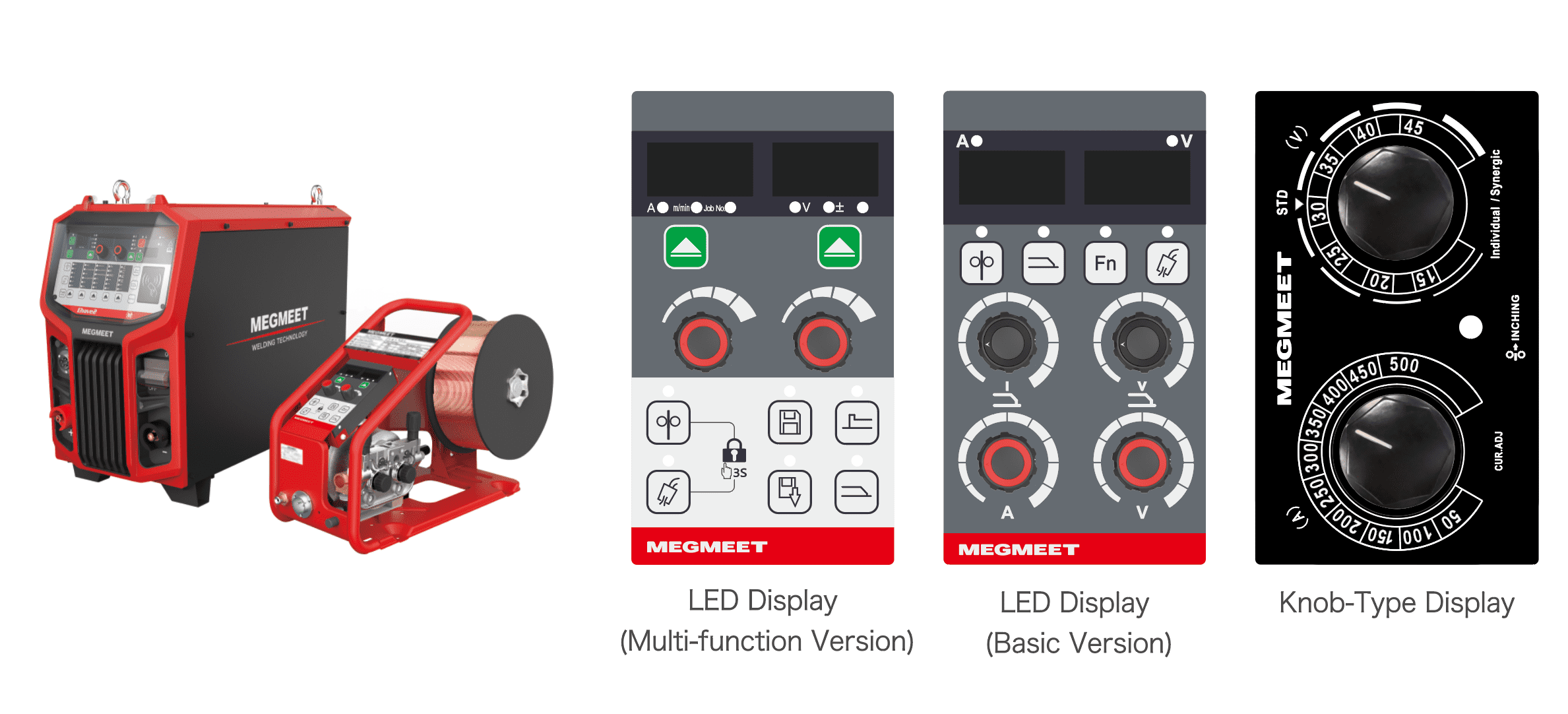Arc welding, a process utilizing the intense heat of an electric arc to fuse welding rods and base materials, is indispensable in joining various metals. While functionality is paramount, the aesthetic appeal of a weld is also significant, especially in applications where the weld is visible. One such aesthetically pleasing weld pattern is the "fish scale" or "scale-like" weld, characterized by its distinctive, overlapping bead structure resembling fish scales. This guide delves into the techniques and nuances required to consistently achieve this visually appealing and often indicative of high-quality welding.

I. Selecting the Right Electrodes and Parameters
1) Welding Electrode Selection:
The welding electrode (or rod) is crucial. Alkaline and stainless steel electrodes often prove more conducive to creating fish scale welds compared to acidic electrodes. This is primarily due to the superior shielding characteristics of their flux coatings. These coatings generate a more stable and uniform shielding gas and slag layer, minimizing porosity (gas bubbles) and inclusions (slag trapped within the weld), resulting in a smoother, more refined weld bead. The diameter and length of the electrode should be chosen based on the thickness of the base material and the welding position to ensure proper penetration and fill. Incorrect electrode selection can lead to inconsistent heat input, affecting the final bead appearance and structural integrity. Using the wrong diameter can result in excessive heat input (too large) causing burn-through or insufficient heat input (too small) leaving an incomplete fusion.
2) Welding Parameter Optimization:
The welding parameters – current, voltage, and travel speed – are intertwined and significantly influence the weld's penetration, width, and cooling rate.
Welding Current (Amperage): Higher current generally leads to a more stable arc and deeper penetration. However, excessive current can cause burn-through and porosity. The optimal current is dependent on the electrode diameter, base metal thickness, and type. Too low a current will result in a shallow, weak weld.
Welding Voltage: Voltage affects arc length and weld bead width. A higher voltage creates a longer arc, widening the bead, but increasing the risk of spatter and undercut (a groove at the weld's edge). Conversely, a lower voltage results in a narrower bead, potentially leading to incomplete fusion. Fine-tuning the voltage is crucial for controlling bead geometry.
Travel Speed: This parameter directly impacts the cooling rate and bead shape. A slower travel speed allows for a wider bead with a more pronounced scale-like pattern, while a faster speed produces a narrower, less defined bead. Finding the right balance is essential for achieving the desired fish scale effect. Too slow, and the weld pool may become too large and unstable; too fast, and the weld will be too narrow and potentially lack proper fusion.
Precise control over these parameters requires experience and careful observation of the weld pool dynamics. Monitoring the arc length, puddle size, and bead appearance allows for real-time adjustments.
II. Mastering Fish Scale Welding Technique
Proper electrode manipulation is as crucial as parameter selection in achieving the desired weld appearance.
1) Electrode Holding and Posture:
Maintaining a stable hand position is paramount. Tremors or erratic movement can lead to inconsistent heat input and an uneven bead profile. The pinky or ring finger can be used as a support against the work piece, providing stability and control. Utilizing a ceramic nozzle to maintain a consistent distance from the work piece can further enhance control. The electrode extension should be adjusted to match the weld depth (typically 3-5mm). The angle of the electrode should be maintained between 70-90 degrees to ensure arc concentration and proper weld fusion.
2) Electrode Manipulation (Travel Technique):
The way the electrode is moved across the weld joint directly influences the final bead appearance. Several travel techniques can be employed to create the fish scale effect, including:
Zig-zag (Sawtooth): This technique involves moving the electrode in a continuous zig-zag pattern, creating overlapping beads that resemble fish scales. The amplitude and frequency of the zig-zag motion should be coordinated with the travel speed to achieve a uniform bead pattern.
Weaving: A weaving technique involves oscillating the electrode in a smoother, more controlled motion, resulting in a wider weld bead with a more refined scale-like texture. The width of the weave should be adjusted based on the desired bead width and the electrode diameter.
Circular or Figure-8 Motions: These techniques offer alternative methods for creating overlapping beads, leading to variations in the fish scale pattern. Experimentation with different techniques is encouraged to find the optimal approach for a particular application. The key is to maintain a consistent rhythm and controlled movement throughout the welding process.
III. Thermal Management: Preheating and Interpass Temperature Control
Preheating and interpass temperature control are essential for preventing defects and ensuring optimal weld quality. These steps are especially critical when dealing with thicker materials or materials prone to cracking.
Preheating: Preheating the base material before welding reduces thermal stresses and prevents the formation of hard, brittle zones in the heat-affected zone (HAZ). The preheating temperature varies depending on the base metal type and thickness, typically ranging from 100-300°C. The preheating zone should extend beyond the weld area, usually 3-5 times the weld width. Improper preheating can lead to cracking, distortion, and a less aesthetically pleasing weld.
Interpass Temperature: In multi-pass welds, controlling the interpass temperature (the temperature of the previous weld pass before applying the next) is crucial. Maintaining an appropriate interpass temperature prevents excessive cooling rates, which can cause cracking or hardness in the HAZ. The interpass temperature should generally be above the preheating temperature but below the critical temperature of the base material to avoid excessive grain growth. Monitoring the interpass temperature can be achieved using temperature-sensitive paints or contact pyrometers. Controlling interpass temperature might involve using techniques like controlled cooling or interpass heating.
IV. Addressing Common Challenges and Troubleshooting
Even with careful planning and execution, challenges can arise during the pursuit of a perfect fish scale weld.
Excessive Spatter: Excessive spatter indicates an issue with the welding parameters, particularly the voltage. Lowering the voltage often helps. The electrode angle and travel speed can also contribute to spatter. Ensuring proper shielding gas coverage is also important.
Porosity: Porosity (gas pockets in the weld) points towards insufficient shielding or moisture in the electrode. Using dry electrodes and ensuring proper shielding gas coverage are vital for preventing porosity.
Undercut: Undercut, a groove along the weld edge, often results from excessive current or improper travel speed. Reducing the current and adjusting the travel speed can mitigate undercut.
Incomplete Fusion: If the weld doesn't fully penetrate the base metal, the parameters might need adjustments to increase heat input. The electrode diameter may also be too small for the base metal thickness.
Lack of Scale-Like Pattern: This is often caused by inconsistent electrode manipulation or improper parameters. Practice is key to developing the skill to consistently create the desired pattern. Experimentation with different travel techniques and parameter adjustments is recommended.
V. Beyond Technique: The Role of Equipment and Environment
While skillful manipulation and parameter control are essential, the quality of equipment and the welding environment play a significant role.
Equipment Maintenance: Regular maintenance of the welding machine, ensuring proper grounding and shielding gas flow is crucial for a stable arc and consistent weld quality.
Cleanliness: A clean working environment is essential. Removing any grease, oil, or other contaminants from the base material ensures proper weld fusion.
Shielding Gas: The type and flow rate of the shielding gas (e.g., Argon, CO2, or a mixture) impact weld quality and appearance. Adequate shielding gas flow is vital to prevent atmospheric contamination.
VI. Conclusion: The Pursuit of Perfection
Achieving a flawless fish scale weld is a testament to skill, precision, and understanding of the underlying principles of arc welding. It's a journey of continuous learning and refinement. Through diligent practice, meticulous attention to detail, and a systematic approach to troubleshooting, any welder can master this art, transforming simple metal joining into a visually striking and structurally sound creation. Remember, the pursuit of perfection is ongoing, a journey fueled by dedication and a passion for excellence.
Related articles:
1. How to Weld Out Fish Scale Welds with Argon Arc Welding?
2. Welding Tips: 6 Secrets of Beautiful TIG Welding
3. How to Weld Stainless Steel: Tips and Tricks
4. Control Weld Reinforcement Height for Improved Welding Quality
5. Robotic TIG Welding Improves Speed, Quality, and Efficiency




